Our last visit to this part of Spain in April 2017 was but a fleeting one to take the ferry from Santander back to the UK. We said then that we would come back at some other time and explore more of Northern Spain. And here we are. I was happy to be back here for no other reason than to stay at the ‘elephant aire’ again. The toll free A8 motorway crosses right across this region close to the coast so it was just a mere six or seven kilometre detour. Situated on the edge of the Cabárceno Wildlife Park this free aire is, we think, a great stop before or after the ferry or at any other time really.
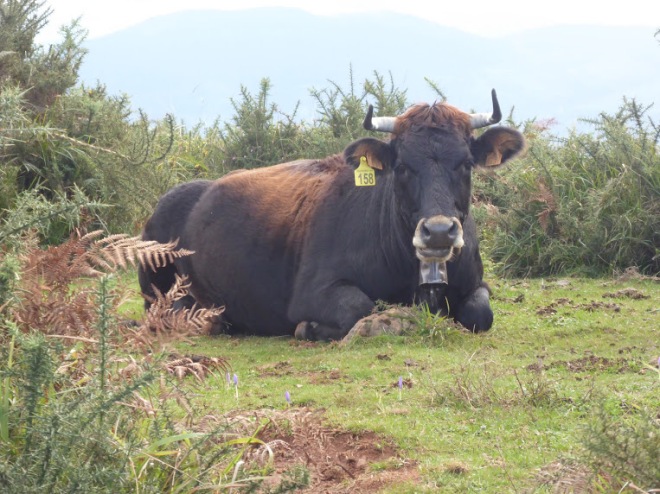
We did get our walking boots out this time though and followed a path up the hillside which eventually crests the ridge of the hill for a superb view of the bay of Santander below and then further on for about a kilometre to a peak for more views across the countryside.

It was about a three and a half hour there and back trip and gave us just enough time go and see the elephants again before it got dark:)

Santillana del Mar is billed as one of the most attractive towns in Spain with its collection of 15th to 18th Century stone houses.

We had a beautiful sunny day to see it and there is no denying that it is an attractive village but it felt a little bit too twee and perfect, a tourist town with all the many associated restaurants, cafes, souvenir shops and coach parking areas. Maybe we were having an ‘off’ day but it didn’t hold our interest for long.

Even though the Picos de Europa mountains were calling me (not so much Tim!) we could clearly see the white stuff on their peaks and we felt we’d left it a wee bit late in the year to explore them this time. (Queue a huge sigh of relief from Tim).

We decided to stick to the coast instead stopping off at different points along the way and to enjoy a bit of coastal walking.

We’ve had mixed weather over the last week from warm sunny days to squally rain and one overnight storm where, once again, reinforcements were needed to retain possession of our roof vents.
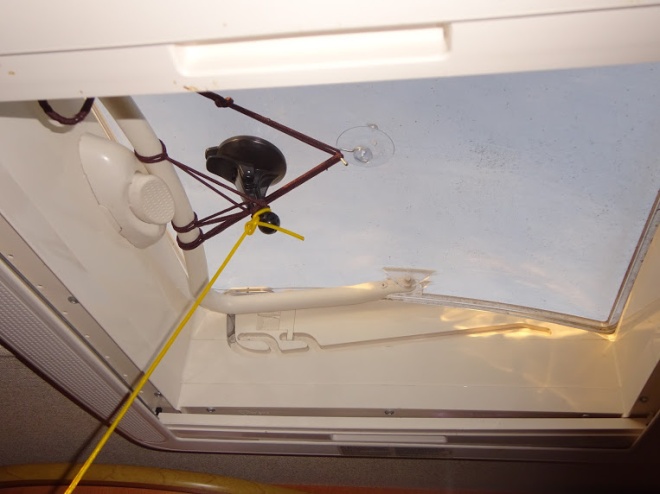
New elastic hair bands were deployed and tightened, the suction cups were resucked and the washing line was affixed from skylight to toilet roll holder in the bathroom. The belt, braces, stockings and suspenders approach.

We’d had a beautiful sunny day with a fabulous coastal walk but big black clouds loomed up late in the afternoon and we had a similar sleepless night to one we’d had in Greece last year where we thought we were actually going to take off. Thankfully by the morning it had all blown itself out.

You see some curious things when travelling to new places but tractor surfing is probably up there with extreme ironing. We’d seen tractors on the beach scraping up the seaweed when we were in St Jean de Luz in France but in Spain they take it to the next level. We were quite far away so the picture isn’t great but it all looked a bit dangerous.

Three tractors with a comb like contraption attached to the back were being buffeted around in the surf whilst trundling back and forth into the waves dragging in the seaweed.

We’d seen a lot of seaweed seemingly being used as mulch come fertiliser in the farmer’s fields but we’ve also seen it left in lots of little clumps on wasteground too. I haven’t been able to find out anymore about it though so it will remain a mystery.
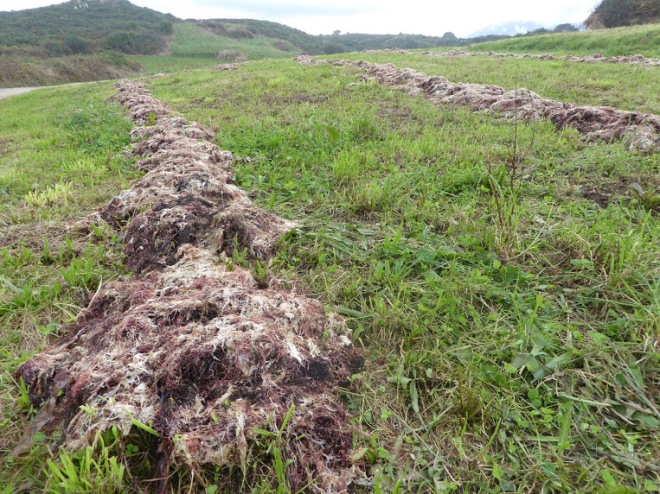


Another unexpected sight whilst out on a coastal walk was a spectacular blowhole on a little island off the coast.
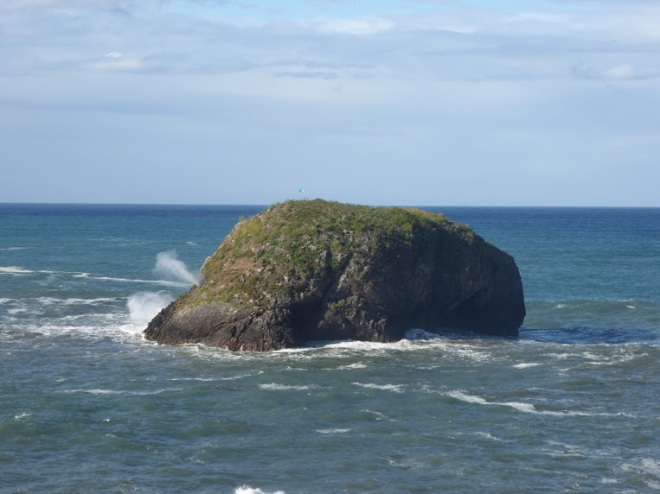
The waves were crashing up the coast that day and we probably wouldn’t have seen it on a calmer day.
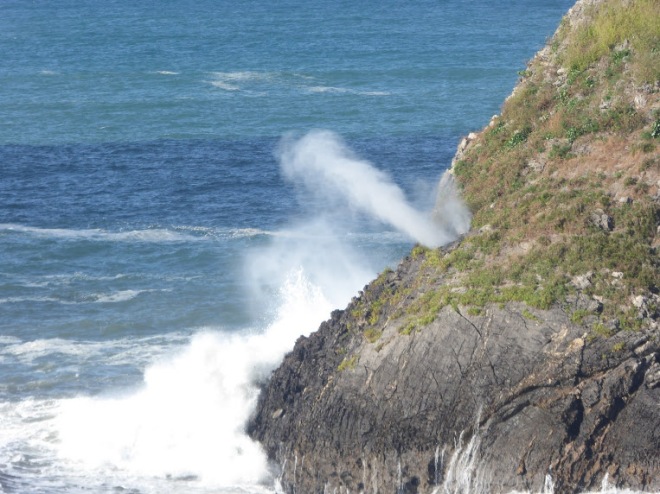
It’s a rugged coastline which reminded us of parts of the Cornish and Pembrokeshire coast.

There’s not a complete coastal path as such but there are plenty of coastal walks to be had using the towns as a starting point.
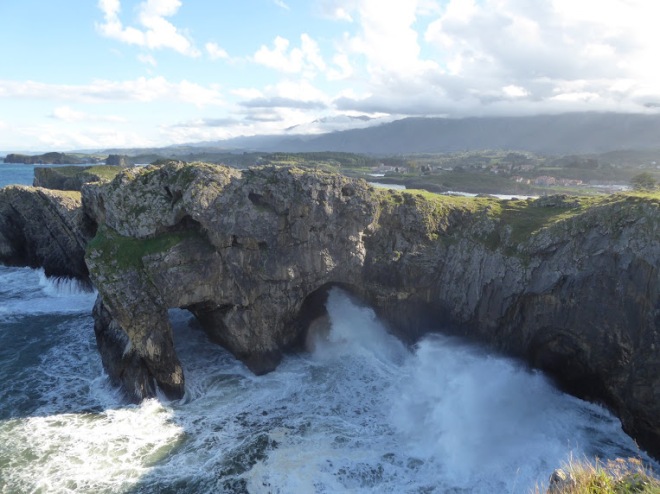

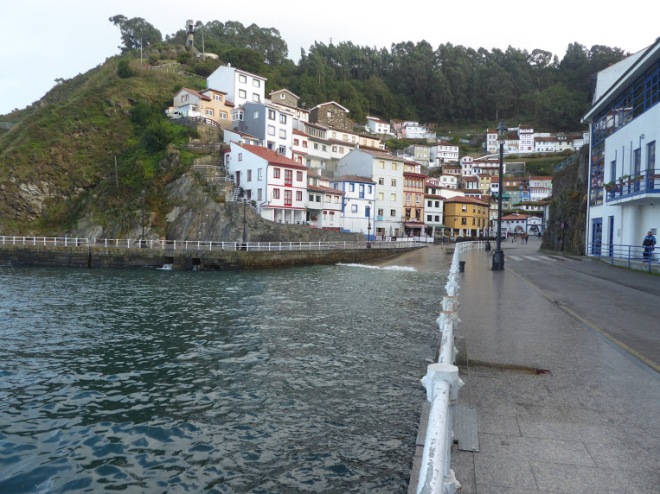


You could easily spend weeks exploring the north west coastline but as inclement weather had been forecast we swung a left inland effectively chopping off the North West corner of the country. We were into Galicia now and part of the Galician coast is called the Costa da Morte because of the number of ships pulverised against the rocks during stormy weather. We didn’t fancy any more sleepless nights on a windswept coastline lying awake wondering if we would survive the night so thought it best to cut our losses and get further south. We couldn’t leave this region without visiting Santiago de Compostela though.

After the supposed discovery of the tomb of St James the Apostle (Santiago to the Spanish, Saint Jacques to the French) in the 9th Century, Santiago became Europe’s second most important religious shrine after St Peter’s in Rome. The cathedral is the showpiece of Santiago and at the heart of its medieval core and is mightily impressive but then the entire old town is impressive really.

A tightly packed feast of narrow lanes, Plazas, squares, monuments and ancient churches all of which is pedestrianized.

Our guide book says ‘uniquely Santiago is a city at its best in the rain’ and goes on to say ‘water glistens on the facades, gushes from the innumerable gargoyles and flows down the streets’. Mmm, yeah right. Water does gush from the innumerable gargoyles but quite often instead of flowing down the streets it drips down the back of your neck.

Still, we did enjoy our visit and planned on watching ‘The Way’ when we got back to the van just to get into the whole spirit of the El Camino de Santiago thing but then discovered we didn’t have it. Doh! I remember watching it a few years ago and was convinced we had it. Ah well, we can download it another time.
Our penultimate stop in Galicia before we hit the frontier town of Tui on the Spanish/Portuguese border was the little fishing village of Combarro to look at the collection of Hórreos (stone granaries) on the seafront. The town apparently has the largest collection of them in Galicia. We arrived at the aire which has a view of the bay about a mile outside the town just as all he cocklers were returning with their hauls.



So it was time to head for the Portuguese border. Alas, the rain has followed us:(
Hasta pronto!

Doesn’t matter how much we visit Spain it never ceases to amaze us how diverse the country of Spain is. Enjoyable post about an area we have yet to visit. Regarding the baby elephant I would have done the same 🙂
LikeLiked by 1 person
Hi Suzanne, thanks for reading. I think Spain has to be the most diverse country for landscapes we’ve been to. We are in to N Portugal now which we haven’t visited before and we just love it. Bambino elephants…who can resist them?! Sorry to read about your upcoming op….I hope all goes well and enjoy your new home☺
LikeLiked by 1 person
It is just a minor operation and a major nuisance that’s life and we are enjoying our new apartment.
LikeLike
Looks like you’re still having an amazing time. I think I’d love the lack of ‘routine’!!
Hopefully will get to see you next time you’re back in the UK XXX
LikeLiked by 1 person
Hi Jo, good to hear from you and yes we must meet up when we are next back……probably going to be early June☺xx
LikeLike
We are heading that way very soon. Currently in Zumaia and heading to Lekeitio tomorrow. Supposedly heavy rain tomorrow then the weather picks up again for a week or so. Pleasant weather should hopefully make for a nice scenic drive around the coastline. Our first time i this region and couldn’t get into San Sebastian yesterday. A rugby match, a basketball match and whatever else was on around the arena and the police had the car park closed. Unfortunately we are too big for the other aire. Will have to try again on our way back.
LikeLiked by 1 person
Hi M&A thanks for reading and lovely to hear from you☺ I’ve just had a look at your blog and it seems I have a lot of catching up to do…….I didn’t realise you had started writing it again and it’s good to see you’re on the road. We really enjoyed N Spain….apart from some blustery weather! Happy travels and if you catch us up it would be great to meet up☺
LikeLiked by 1 person